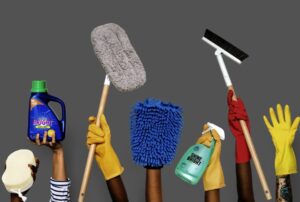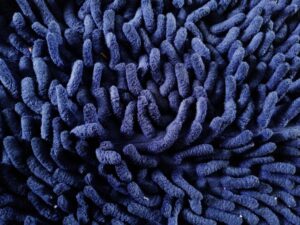Vinegar has earned a reputation as a miracle cleaning product—and for good reason. It’s affordable, eco-friendly, and effective against a wide range of everyday messes. But while it can tackle plenty of household jobs, vinegar isn’t as universal as many people think.
Used the wrong way, it can damage finishes, weaken materials, and leave behind more problems than it solves. Let’s break down when vinegar is the hero of the cleaning cupboard—and when it needs to stay on the shelf.
✅ Great Uses for Vinegar
There’s no doubt that vinegar works well on certain surfaces. Its natural acidity helps break down mineral deposits, soap scum, and grime. Plus, it neutralizes odors and has antibacterial properties.
Best uses include:
- Glass and mirrors (streak-free shine)
- Tile and grout (dissolves soap scum)
- Coffee makers and kettles (removes limescale)
- Garbage disposals (when used with baking soda for odor control)
- Laundry deodorizing and fabric softening
Tip: Always dilute white vinegar with water (usually 1:1 or less concentrated) to prevent damage and overpowering smells.
🚫 Surfaces Vinegar Shouldn’t Touch
Despite its versatility, vinegar’s acidity can cause real harm on some materials—especially those that are porous, sealed, or reactive to acid.
Avoid using vinegar on:
- Granite and marble countertops: Acid can etch and dull the finish
- Natural stone floors: Can break down protective sealants
- Hardwood floors: Strips the finish and dries out the wood
- Rubber seals and hoses: Degrades elasticity over time (e.g., in dishwashers and washing machines)
- Electronics and screens: Damages protective coatings
When in doubt, test vinegar on a hidden area—or skip it altogether for delicate surfaces.
🧼 The Vinegar + Baking Soda Combo: Flashy but Flawed
The classic bubbling combo of vinegar and baking soda looks impressive—but it’s more chemistry demo than cleaning solution. Here’s why:
- The two cancel each other out (acid + base = mostly water and salt)
- The fizz can help dislodge grime, but it’s short-lived
- Often leaves residue that requires additional cleaning
Instead: Use baking soda for scrubbing, and rinse with vinegar after if needed—not simultaneously.
🧴 Safer Alternatives for Delicate Surfaces
If vinegar’s not the right call, try these gentle-yet-effective substitutes:
- For granite/marble: Use a pH-neutral stone cleaner or mild dish soap and warm water
- For hardwood floors: Use a wood-safe cleaner or a damp (not wet) microfiber mop
- For electronics and screens: Use screen-safe wipes or a 70% isopropyl alcohol + distilled water solution
- For rubber seals: Stick to mild soap and water to avoid breakdown over time
🧪 Make Your Own Targeted DIY Cleaners
Want to keep your homemade cleaning vibe but avoid vinegar overuse? Try these targeted blends:
- Glass Cleaner: 1 cup distilled water + 1 cup rubbing alcohol + 1 tbsp cornstarch
- Stone Surface Spray: 2 cups water + a few drops of castile soap + optional essential oils
- Deodorizing Spray: 1 cup water + 1 tbsp baking soda + 10 drops essential oil (shake before use)
Homemade doesn’t have to mean “one size fits all.”
✅ Wrap-Up
Vinegar is an amazing cleaner—but only when used the right way. Stick to the surfaces where it shines, skip the sensitive stuff, and mix up smarter alternatives for a whole-home clean that actually helps more than it hurts.



